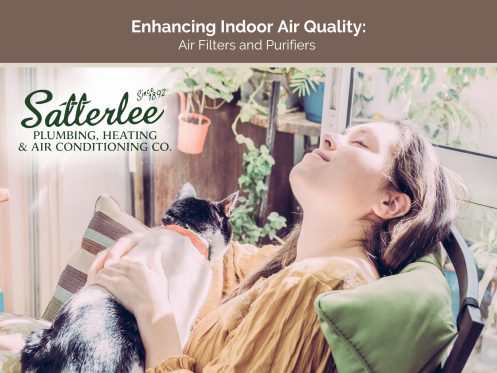Indoor air quality is a critical concern for homeowners in Pittsburg, Kansas, especially as allergens, pollutants, and pathogens can linger in homes year-round. While traditional air filters are essential, combining them with advanced technologies like UV light or ionization can provide comprehensive protection against a broader spectrum of contaminants. Here’s how these systems work, their benefits, and how to maintain them effectively.
The Power of Pairing: Air Filters + Advanced Technologies
- Traditional Air Filters
High-efficiency particulate air (HEPA) filters capture up to 99.97% of particles as small as 0.3 microns, including dust, pollen, and pet dander. However, they have limitations:
-
- They don’t eliminate odors or volatile organic compounds (VOCs).
- They can’t neutralize microbes like viruses or bacteria.
- Ionizing Air Purifiers: How Does Ionizers Work Together with Traditional Air Filters
Ionizers release negative ions into the air, which attach to positively charged particles like dust, allergens, and pathogens. This causes particles to clump together, making them too heavy to stay airborne. They either settle on surfaces (to be cleaned later) or get trapped by your HVAC’s air filter. Ionizers also help reduce odors and VOCs when paired with activated carbon filters. - UV Air Purifiers: Do UV Air Purifiers Work Together with Traditional Air Filters?
UV-C light purifiers target microorganisms like mold spores, bacteria, and viruses. When installed within HVAC systems, UV light damages the DNA of these pathogens, rendering them harmless. Therefore, it prevents mold/bacteria from growing on the air filter and from being cycled through the house. Studies show UV purifiers are highly effective at sterilizing air without producing ozone or harmful byproducts.
Whole-Home Air Purifier Systems and Air Filters
Overall, whole-home air purifiers are the best of both worlds. Whole-home systems integrate ionization, UV light, and HEPA filters into your existing HVAC system. For example:
- Polar Ionizers sanitize air and surfaces, covering up to 2,400 sq. ft. with zero maintenance.
- Smart Systems combine HEPA filtration, UV-C light, and ionization for 24/7 protection.
These systems ensure consistent air quality across all rooms, reduce energy costs, and require minimal upkeep compared to portable units.
Maintenance Matters: How Often to Change Air Filter
However, regular filter changes are crucial for system efficiency and air quality. Without clean traditional air filters, the efficiency of any air purifier will be significantly reduced. But how often to change air filters? This frequency can depend on:
- Household Factors: Pets, allergies, or smoking may require changes every 30–60 days.
- Filter Type:
- Basic fiberglass: 30 days.
- Pleated/MERV 8–13: 3–6 months.
- High-efficiency (MERV 14+): 6–12 months.
Check filters monthly and replace them when visibly dirty. A clogged filter strains your HVAC system, increasing energy bills by up to 15%. Another helpful tip is to write the date on the side of the filter to remind you when the filter was last replaced.
Breathe Easier with Satterlee Heating and Air
At Satterlee, we specialize in tailoring advanced air purification solutions to Pittsburg homes. Our services include:
- Whole-home system installation with UV-C or ionization technology.
- Bi-annual maintenance plans to optimize HVAC performance.
- 24/7 emergency repairs and free estimates.
Don’t let poor indoor air quality compromise your comfort or health. Contact Satterlee Heating and Air today for expert HVAC inspection, maintenance, or installation. Let us help you create a cleaner, healthier home environment!
By combining traditional air filters with cutting-edge technologies, homeowners can achieve unparalleled indoor air quality. Trust Satterlee’s licensed professionals to guide you through the best solutions for your needs-ensuring your family breathes easier year-round.


